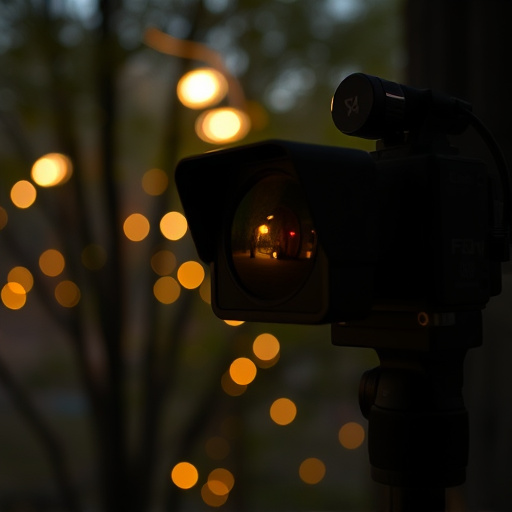Wireless hidden cameras for apartments have advanced with features like remote access, night vision, and motion detection, appealing to both residents seeking security and managers aiming for safe environments. Strategically placed in hard-to-notice locations, these cameras stream footage to connected devices. While beneficial, their covert nature raises privacy concerns, necessitating compliance with local laws regarding installation consent or notification. Advanced techniques like IR and thermal imaging help identify hidden cameras, while regular inspections, motion sensors, and updated security software protect apartments from surveillance.
Uncover the insidious world of covert recording with our comprehensive guide. Learn how to identify wireless hidden cameras, potent tools that can be secretly installed in apartments. We explore ethical and legal aspects, providing insights into their application and implications. Discover advanced techniques to uncover hidden surveillance devices and fortify your apartment against covert recording attempts using best-practice security measures. Stay informed and protect your privacy in today’s digital age.
- Understanding Wireless Hidden Cameras: A Comprehensive Overview
- Identifying Potential Spots for Covert Recording in Apartments
- Ethical Considerations and Legal Implications of Installing Hidden Cameras
- Advanced Techniques for Uncovering Hidden Cameras
- Best Practices for Securing Your Apartment Against Covert Recording
Understanding Wireless Hidden Cameras: A Comprehensive Overview
Wireless hidden cameras for apartments have become increasingly sophisticated, offering a range of features designed to ensure discretion and effective surveillance. Understanding these devices is crucial for both residents looking to enhance security and property managers aiming to maintain safe living environments. These cameras are typically installed in hard-to-see locations, utilizing wireless technology to transmit footage directly to a connected device, such as a smartphone or computer.
This technology provides several advantages, including remote access, real-time monitoring, and the ability to capture evidence discreetly. Many modern models feature advanced sensors, night vision capabilities, and motion detection alerts, making them versatile for various purposes. By staying informed about these wireless hidden camera systems, individuals can make informed decisions regarding their apartment security needs and choose the best solution for their specific requirements.
Identifying Potential Spots for Covert Recording in Apartments
When considering covert recording in apartments, identifying potential spots is a crucial step. Wireless hidden cameras for apartments offer a discreet solution to monitor various areas within the unit and surrounding spaces. Common locations include near entry points like doors and windows, as well as strategic positions within living rooms, kitchens, and bedrooms, where activities of interest might occur.
These hidden cameras can be placed behind picture frames, fake electrical outlets, or even integrated into everyday objects like clocks or smoke detectors. It’s important to assess the layout of the apartment and consider angles that offer unobstructed views while remaining invisible to occupants. Understanding privacy laws in your jurisdiction is also essential before setting up any surveillance equipment.
Ethical Considerations and Legal Implications of Installing Hidden Cameras
The use of wireless hidden cameras in apartments or any private spaces raises significant ethical and legal concerns. While these devices can offer enhanced security, privacy is a fundamental right, and their installation should be approached with caution. It’s crucial to respect the privacy expectations of residents, especially when it comes to covert recording.
Legally, many regions have specific regulations regarding hidden cameras. Unauthorized installation may lead to severe consequences, including civil lawsuits for invasion of privacy. For instance, in apartments, landlords must obtain consent or adhere to specific notification requirements before setting up wireless hidden cameras. Understanding and adhering to these legal frameworks is essential to avoid legal complications and maintain ethical standards when utilizing surveillance technology like wireless hidden cameras for apartments.
Advanced Techniques for Uncovering Hidden Cameras
In the quest to uncover hidden surveillance, advanced techniques have emerged as powerful tools for identifying covert recording spots. One of the most effective methods involves utilizing specialized infrared (IR) detectors designed to capture heat signatures—a unique feature of many wireless hidden cameras commonly found in apartments. These IR cameras can pierce through obstacles and reveal devices operating in the dark or hidden from direct line-of-sight views.
Additionally, professionals swear by thermal imaging technology, which detects variations in electromagnetic radiation emitted by objects. This innovative approach is particularly useful for identifying small, heat-emitting components within intricate appliances or electronics that might be used as cover for hidden cameras. By scanning walls, furniture, and appliances with thermal imagers, individuals can uncover clandestine recording devices often disguised as everyday items in apartments, ensuring a more comprehensive search.
Best Practices for Securing Your Apartment Against Covert Recording
To secure your apartment against covert recording, start by identifying potential hidden camera spots. Common areas like windows, doors, and light fixtures often serve as hiding places for wireless hidden cameras for apartments. Regularly inspect these locations, looking for any unusual devices or modifications that could indicate the presence of surveillance equipment.
Implementing best practices involves using security measures such as installing motion-activated alarms and lighting to deter potential intruders. Additionally, consider using UV detection tapes on windows and doors, which can reveal invisible markings left by cameras. Regularly updating security systems and software ensures you stay ahead of evolving technology used in covert recording devices.
In conclusion, while the use of wireless hidden cameras in apartments can offer enhanced security and peace of mind, it’s crucial to approach their deployment ethically and legally. Understanding the intricacies of identifying these devices, as outlined in this guide, is a vital step towards securing your personal space. By combining awareness with best practices, residents can protect their privacy and create a safer environment without compromising on legal or moral grounds. Remember, knowledge is power when it comes to safeguarding your home from covert recording devices like wireless hidden cameras for apartments.
